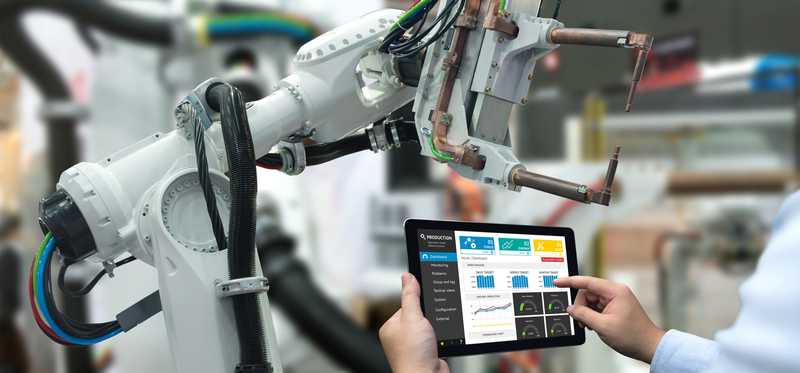25 Stocks That Are Crushing the Market in 2019

25 Stocks That Are Crushing the Market in 2019
These companies are leading the way in gains
Despite all of the trepidation, Wall Street is having a very good year. Through the first 10 months of 2019, the S&P 500 Index, one of the better proxies for the broader market, is up around 21%. That's a sizable gain on an absolute basis and compared to history, though it isn't exactly out of the ordinary for the market to make big swings higher or lower. The thing is, the "market" isn't one stock, it's thousands of stocks.
So within the big gain in the S&P 500 are, roughly, 500 companies that have seen big gains and big losses... and a lot in between. The market cap weighted average of all those stock price movements is around 21%. And if you dig into the list of companies that Standard & Poors has selected to be included in the S&P 500 Index (because they provide a broad representation of the economy), there are some stocks that have done much, much better than the index.
In fact, there are some that have simply crushed the about 21% gain of the S&P 500 Index through the end of October. And this isn't making mountains out of mole hills, either. Some of the best performing names in the S&P 500 Index have provided investors with more than three times the gain of the broader market. Here's a list of 25 stocks that are crushing the S&P 500's gain so far in 2019.
Previous
Next

1. Lam Research (Nasdaq: LRCX)
Lam Research roughly doubled in price over the first 10 months of 2019, nearly five times the performance of the S&P 500 Index. This $39 billion market cap technology company supplies wafer fabrication equipment and services to the global semiconductor industry. In the most recent quarter (the fiscal first quarter of 2020 for Lam), the company had revenue of $2.165 billion, down slightly from $2.330 billion in the prior year. Earnings, however, came in at $1.15 per share, up from $1.10 a year ago. Helping that improvement along was a nearly 9% reduction in the number of shares outstanding. The massive price advance so far in 2019, meanwhile, has left the stock trading at a steep valuation, with the price to sales, price to earnings, price to cash flow, and price to book value ratios all above their five-year averages.
ALSO READ: Lam Research Keeps Its Head Down in a Tough Market
Previous
Next

2. K L A Corporation (Nasdaq: KLAC)
K L A Corp is up a hefty 88% or so in 2019, over four times the market's gain. Like Lam Research, this $27 billion market cap technology company serves the semiconductor industry. More specifically, the company provides "advanced process control and process-enabling solutions for manufacturing wafers and reticles, integrated circuits, packaging, printed circuit boards, and flat panel displays." In the most recent quarter, the fiscal first quarter of 2020 for K L A, it had record revenue of $1.4 billion with adjusted earnings of $2.48 per share coming in above its guidance. It also announced a 13% quarterly dividend increase, bringing its annual streak of hikes to 10 consecutive years. The company appears to be hitting on all cylinders right now. The big gain, however, has K L A's shares looking expensive compared to its five-year average for the P/S, P/E, and P/B ratios.
Previous
Next

3. Advanced Micro Devices (Nasdaq: AMD)
There's a bit of a theme going on at the top of the "crushing the market" list, with Advanced Micro Devices coming in at No. 3 with a gain of just under 83% through October. Like the companies in the top two spots, Advanced Micro is a technology company involved in the microprocessor space -- only AMD makes the chips that get used in computers, game consoles, and data centers around the world. With a market cap of roughly $39 billion it actually isn't the biggest name in the markets it serves, but it has managed to carve out a nice niche for itself. Through the first nine months of 2019 the company had revenue of about $4.6 billion, down from nearly $5.1 billion last year. Earnings were $0.15 per share versus $0.28 in the prior year. Despite the year-over-year declines, the company's adjusted earnings in the third quarter were in line with expectations, as new products appear to be gaining traction. Investors have, obviously, been pleased with the company's performance, overall, with the price advance pushing the stock's P/S and P/E ratios well above their five-year averages.
Previous
Next

4. Chipotle Mexican Grill (NYSE: CMG)
Changing things up, finally, is $21 billion market cap fast-casual giant Chipotle Mexican Grill. Although off its highs of the year the stock was still up a massive 80% through the first 10 months of 2019, well over three times the advance of the S&P 500 Index. Chipotle has posted strong same store sales results all year long, with growth of 9.9% in the first quarter followed by 10% in the second and 11% in the recently ended third quarter. That said, the company's margins haven't been living up to past results, so Wall Street is beginning to have some questions about valuation here. Indeed, after the massive run so far in 2019, the stock trades at a premium to its five-year average P/S, P/B, and price to cash flow ratios.
Previous
Next

5. Coty Inc. (NYSE: COTY)
Coty is a roughly $9 billion market cap consumer goods company with a focus on beauty products. While the stock was up a heady 78% through October, it hasn't been a smooth ride. At one point the stock had doubled, only to fall to a year-to-date gain of around 30% before advancing again. Interestingly, unlike most of the companies on this list, Coty's stock is trading below its five-year average P/S, P/B, and price to cash flow ratios. That said, the company's P/E is meaningless because its earnings have been negative in each of the last three fiscal years as it attempts to recover from the ill-timed purchase of brands from Procter & Gamble (NYSE: PG). The recent advance is being driven by a plan to restructure the business, which Wall Street appears to think is a good idea.
ALSO READ: Will Coty's Strategic Review Streamline Its Sprawling Business?
Previous
Next

6. MarketAxess Holdings (Nasdaq: MKTX)
MarketAxess operates an online trading platform for fixed-income investors. The $13 billion market cap company was up roughly 100% before a sharp drop in September. It has since found more solid ground and started to move higher again, sitting with a gain of roughly 74% though the tenth month of the year. Although the company's performance has been relatively strong so far this year, beating earnings estimates in two out of three quarters, the September swoon appears to be related to Wall Street concerns at the time around highly valued growth stocks. Indeed, MarketAxess trades at a premium to its five-year average P/S, P/E, P/B, and price to cash flow ratios. That said, the company has been growing quickly, and recently made its debut in the S&P 500 Index. That means that a lot of new investors will either have to buy it (index based exchange traded funds, for example) or could start looking at it as a more viable investment option.
Previous
Next

7. Copart Inc. (Nasdaq: CPRT)
Copart, which facilitates online auto auctions and sales, is up around 73% through the first 10 months of 2019. The company's services are largely business to business, as the cars that get sold through its service generally come from insurance companies, rental agencies, and car dealerships. The buyers are often businesses as well. Copart collects transaction fees and buys and also sells cars for its own account. With a $19 billion market cap it is not a small fry in the market, even though you may not have heard of it before. And the company just ended fiscal 2019 with a bang, posting record sales results in the fourth quarter. Earnings were up an incredible 42% year over year. That said, the stock's P/S, P/E, P/B, and price to cash flow ratios are all above their five-year averages.
Previous
Next

8. Xerox (NYSE: XRX)
Although the name Xerox probably conjures up images of photocopy machines, these days the company is focused around making and selling document management systems. That includes things like photocopy machines and printers (and the associated supplies), but also a service component and, importantly, a direct tie to digital documents. Roughly $7 billion market cap Xerox isn't the same company it was 20 years ago. The stock, which was up just about 71% through October, has had a bit of a choppy run. A swift advance (it was up over 40% in January alone) to start off the year was driven by a notable earnings beat. The shares reached a high of around 80% or so in the middle of the year before losing about half that gain. Investor interest in Xerox stock has obviously picked up, since it is again closing in on its yearly highs. That said, the P/S and P/B ratios are above their five-year averages.
Previous
Next

9. Celgene Corp (Nasdaq: CELG)
With a $76 billion market cap, Celgene is a giant in the biopharmaceutical space. The company is heavily focused on cancer products, with some notable, and patent protected, offerings. The stock was up 68% though Oct. 2019, with roughly half of that advance coming in the month of January. This is an important bit of information because that was the month in which Bristol-Myers Squibb (NYSE: BMY) announced its intention to buy Celgene. The deal is very close to being consummated, so buying Celgene at this point probably isn't something that most investors should be looking at -- despite what has been a very good year for the stock. That said, there are some unique features to the purchase agreement that might be of interest to investors with a flare for special situations.
Previous
Next

10. Applied Materials (Nasdaq: AMAT)
Applied Materials makes semiconductor manufacturing equipment, getting us back to an early theme on this list. With a market cap of $51 billion it is one of the biggest players in the space. The stock was up a hefty 65% through October. Although top- and bottom-line results have been weak this year, relative to the previous year, the company has figured out a way to beat analyst earnings expectations in each of the first three quarters. That said, management has been suggesting that 2020 will be another difficult year. Which is hard to put together with the dramatic year-to-date price increase, until you look at the roughly 45% decline from 2018 highs that it suffered by the end of last year. So 2019 is something of a recovery year (a fact that is true for most of the stocks in this sector, by the way). That said, the swift advance so far in 2019, coupled with middling results, has left Applied Materials' stock looking pricey when considering price to sales and price to book value, which are both above their five-year averages.
Previous
Next

11. Global Payments (NYSE: GPN)
Operating in roughly 100 countries, Global Payments provides payment processing services to small- and mid-sized businesses and processing services for card issuers. Roughly three quarters of its business is tied to North America. It recently bought competitor Total Systems Services for $21.5 billion, which expanded its reach into the card issuer space. After a 64% price advance through the first 10 months of 2019, the company now has a market of around $51 billion. That said, the merger, the largest in the company's history, makes financial results a little murky right now. For example, revenue was up nearly 30% in the fiscal third quarter but earnings fell roughly 50% and margins dropped a painful 10 percentage points. And it is still working on the integration process, so earnings could be a little hazy for a while yet. Meanwhile, the stock is trading at an elevated P/S ratio and its price to forward earnings ratio is also above its five-year average.
Previous
Next

12. Charter Communications (Nasdaq: CHTR)
The second largest cable company in the United States, Charter Communications rings in with a hefty $100 billion market cap. The stock was up roughly 64% through October. The big story here is high-speed internet access, which is increasingly what people use cable for. And that brings up the downside of the business, which is the ongoing loss of customers buying video services. The third quarter of 2019 was a good example of the issues, with Charter adding roughly 380,000 internet customers while losing 75,000 video consumers. Charter also lost 190,000 wireline phone customers, but added 208,000 on the mobile side. Based on the stock price advance, Wall Street apparently approves of the pivot the company is making toward more in-demand services, which appears to be going reasonably well. Created via a series of mergers in 2016, Charter's historical valuation metrics are a bit difficult to read, but its P/S ratio is just a touch over its five-year average -- but up notably from last year when the stock was, perhaps obviously in hindsight, a better buy.
Previous
Next

13. Leidos Holdings Inc (NYSE: LDOS)
Although perhaps not a household name, $12 billion market cap Leidos Holdings is a big player in the government services space. Specifically it focuses on information technology services, with the stock's hefty 63% or so gain through October largely being driven by a surge in government IT spending. It has been doing a good job of fending off competition to win important contracts, beating Wall Street's earnings expectations in each of the first three quarters of the year. Overall, investors seem to appreciate the company's role in the increasingly important government IT space and expect good things to continue. Notably, that includes both organic growth and the potential for more acquisitions (the company, as it exists today, was largely created via the purchase of Lockheed Martin's (NYSE: LMT) services business in 2016). That said, it looks like there's a lot of good news priced into Leidos' stock today, which trades above its five-year average P/S, P/B, and price to cash flow ratios.
Previous
Next

14. Hess Corp (NYSE: HES)
Oil and natural gas driller Hess Corp watched its shares rocket higher by 62% through the first 10 months of 2019, easily beating the S&P 500 Index and the broader energy sector (which fell about 1% or so in that span), as measured by the Vanguard Energy ETF (NYSEMKT: VDE). The $20 billion market cap energy company has been shifting gears in recent years, selling off assets so it could focus in on its best investment opportunities. That's helped to boost its production numbers, which advanced 10% year over year in the second quarter and 5% in the third quarter. While that growth has been overshadowed on the bottom line by the volatile price of oil, with the company losing money in each of the last two quarters, investors appear willing to look past the red ink and focus on other factors -- like production growth. The stock's peer-beating performance, however, has left it looking a bit pricey compared to its five-year averages for the P/S and P/B ratios (P/E, for reference, isn't meaningful because the company's trailing 12-month earnings are negative right now).
Previous
Next

15. Arconic Inc. (NYSE: ARNC)
Specialty parts manufacturer Arconic was also up about 62% through October. The last few years have been something of a volatile period for the company, which included a corporate separation (from aluminum giant Alcoa (NYSE: AA)), turnover in the top ranks, and a buyout offer from a private equity shop that Arconic decided not to pursue. As if that weren't enough, the company also intends to break itself in two, a plan that won't be complete until the second quarter of 2020. In other words, Arconic looks like a special situation stock today. Investors are clearly cheering the company's actions, but most investors would probably be better off sitting on the sidelines until the dust settles here. With so much going on, you never know what twist or turn might come next.
ALSO READ: Why Arconic Stock Rose a Huge 53% in the First Half of 2019
Previous
Next

16. Keysight Technologies (NYSE: KEYS)
Keysight Technologies provides customers with electronic design and testing solutions, such as design simulation, prototype validation, and network and cloud optimization. It has a nearly $20 billion market cap and the stock was up roughly 62% through the tenth month of 2019. On the third-quarter 2019 earnings call, management highlighted that performance has been strong (quarterly revenue and earnings were up 8% and 41%, respectively, year over year). In fact, Keysight has beaten analyst projections in each of the last four quarters. And further, management upped full-year 2019 guidance as well. Which helps explain the hefty stock price advance. That said, like so many other names on this list, the big run this year has the company, despite its success, looking a bit expensive. The stock's P/S, P/E, P/B, and price to cash flow ratios are all above their five-year averages, notably so in some cases.
Previous
Next

17. Synopsys Inc. (Nasdaq: SNPS)
Up roughly 61% through the first 10 months of 2019, $20 billion market cap Synopsys advanced almost three times as much as the broader market. The company makes electronic design automation software, which is used to make integrated circuits and chip systems by manufacturers who use such microprocessors in their products (like auto and robotics companies, among many others). In essence, it's yet another company tied to the semiconductor industry that's had a big run in 2019. One interesting feature here is the use of contracts to lock in customers, with the average contract length at roughly 3 years today. Thus it isn't quite as subject to the ups and downs of the chip space. To put some numbers behind that, third-quarter revenue was up 9% year over year with earnings advancing a hefty 25%. Synopsys is projecting similarly strong fourth-quarter results as well, despite the top- and bottom-line struggles seen at chip makers like AMD and Applied Materials. That said, the stock is currently trading with elevated P/S, P/B, and price to cash flow ratios, relative to their longer-term averages.
Previous
Next

18. Target Corp. (NYSE: TGT)
It might seem a bit crazy to anyone who has been keeping track of the so-called "retail apocalypse," but giant retailer Target's stock rose by a whopping 61% through the first 10 months on 2019. Shares of its arch rival Walmart (NYSE: WMT), by comparison, were only up around 25%, highlighting the fact that some industry watchers believe Target is the better long-term retail play. Recent results, meanwhile, have been pretty solid, with fiscal second-quarter 2019 same store sales up an impressive 3.1% and earnings advancing by an enviable 20%. At one point it seemed as if investors doubted that $55 billion market cap Target could adjust to the consumer shift toward online shopping, but it is clearly proving the naysayers wrong. And Wall Street has responded by bidding the stock up to the point where Target is trading above its five-year averages for P/S, P/E, P/B, and price to cash flow. That said, on some valuation metrics Target actually looks relatively cheap compared to Walmart... An interesting fact if you have a burning need to add a retailer to your portfolio.
Previous
Next

19. Jacobs Engineering Group Inc (NYSE: JEC)
Jacobs Engineering was up roughly 60% through Oct. 2019, easily besting the S&P 500's gain. But the big story here is that this $12 billion market cap company's name is increasingly misleading. That was on display earlier this year when Jacobs agreed to buy KeyW, a government contractor with a focus on the cyber-security space. It was the third such purchase that Jocobs has made in recent years. So far, the business transition appears to be going quite well, with Jacobs' CFO Kevin Berryman commenting in the company's fiscal third-quarter earnings release that, "We delivered another quarter of solid results across both lines of business with accelerating growth in our sales pipelines, during the most transformative period in our company's history." Adjusted earnings were up 13% year over year and the company increased its full-year guidance. That said, while investors appear to be rewarding the company for a good job, the price advance has left the P/S, P/E, P/B, and price to sales ratios above their longer-term averages -- a lot of good news is priced in here.
Previous
Next

20. Equinix Inc (Nasdaq: EQIX)
Equinix is a bit of an odd company, since the data center owner is structured as a real estate investment trust (REIT). REIT's are specifically designed to pass cash flow on to investors via dividends, but Equinix's dividend yield is only 1.75% or so, which is actually less than the 1.85% yield you would get from owning SPDR S&P 500 ETF (NYSEMKT: SPY). That said, $46 billion market cap Equinix's 60% share price gain through the first 10 months of 2019 has something to do with that low yield. Most investors that have benefited from the swift advance probably aren't complaining, or perhaps even looking at, the yield. Equinix is considered a growth REIT. If you are a dividend investor focused on dividend growth that might be okay with you, but if you are looking to maximize the income you generate from your portfolio this is not a good option.
ALSO READ: Equinix Turns in Another Good Quarter and Raises Guidance Again
Previous
Next

21. MSCI Inc. (NYSE: MSCI)
The growth in exchange traded funds (ETFs) has been a huge boon to MSCI's business, which creates and tracks indices. It does other things as well, like providing portfolio analytics for asset managers, but the headline story today is passive investing. MSCI basically gets a fee for creating and tracking indexes that underlie ETFs. The $20 billion market cap stock was up around 59% through month-end October. Earnings have beaten analyst projections each quarter this year, with adjusted earnings up 20% through the first nine months of 2019. In other words, there's a good reason for investors being positive here. That said, like so many other names on this list, MSCI looks a bit pricey when you compare its current P/S, P/B, and price to cash flow ratios to their five-year averages. P/E, meanwhile, is roughly in line with its longer-term average.
Previous
Next

22. Cintas Corp (Nasdaq: CTAS)
Cintas, which provides uniforms to industrial customers, isn't a particularly sexy business. However, you wouldn't know that if you looked at the incredible 59% increase in this $27 billion market cap company's stock price between January and October. The thing is, this isn't exactly an anomaly. Cintas has long provided impressive growth despite its somewhat mundane business. And the fiscal first quarter of 2020 was a great example, with revenue up 6.7% and net income advancing by 22%. The company beat Wall Street's earnings per share expectations by a huge $0.17. Perhaps more important, the company provided a constructive outlook for all of fiscal 2020. That said, after such a swift price advance, Cintas does not look cheap, with its P/S, P/E, P/B, and price to cash flow ratios all above their five-year averages.
Previous
Next

23. Fleetcor Technologies (NYSE: FLT)
Providing payment processing services for gasoline, lodging, and toll roads, among other things, Fleetcor Technologies works to help companies keep track of and control expenses in these areas. With a $25 billion market and a 58% stock price advance through October, this financial company has clearly caught the eye of Wall Street, even if you've never heard of it before. The company beat earnings expectations in the first half, with second quarter adjusted net income up 8% year over year and adjusted earnings increasing by 11%. It has been an active year for Fleetcor, which has been inking new deals with customers and expanding its operations via acquisition. That said, the stock currently trades with price to sales, price to book value, and price to cash flow ratios that are above their five-year averages. While the current P/E is below its five-year average that ratio is biased lower by a one-time benefit in the second quarter that pushed GAAP earnings in the period higher by roughly $0.72 per share.
Previous
Next

24. CDW Corp (Nasdaq: CDW)
CDW Corp provides schools, governments, businesses, and healthcare providers in the U.S., U.K., and Canada with IT products and services. The $18 billion market cap company saw its shares rise by roughly 57% through October. Earnings have been increasing as the year has progressed and, notably, beating analyst expectations each quarter. Investors have obviously taken notice. The company highlighted its strong performance with the announcement of a nearly 30% dividend increase during the 3Q 2019 conference call. As you might expect, however, CDW's stock is trading at a premium to its five-year averages for the P/S, P/B, P/E, and price to sales ratios.
Previous
Next

25. Moody's Corp (NYSE: MCO)
With a global business in rating debt, $40 billion market cap Moody's has a moat that is hard for competitors to overcome. It also provides other financial research and services as well, but is best known as a bond rating agency. Part of that is related to the fact that it is one of just a handful of companies that enjoys favorable regulatory status to provide debt ratings in the large U.S. market. Moody's stock had a stellar first half, gaining nearly 40% through the first six months of the year. It gained a bit more through the end of October, ending the 10-month span with a 57% gain. Although the gains after June are nothing to shrug off, the markets appear to have discounted a lot of good news in the early part of 2019. Largely that "good news" related to debt issuance picking up and the economy managing to sidestep a recession (which is generally bad for bond issuance). In fact it has been a pretty good year so far on the bond side of things, with revenue in the company's debt rating business increasing 16% on strong global debt issuance in the third quarter. Based on strength in the markets it services, meanwhile, Moody's upped its full-year earnings guidance. Valuation metrics here are a bit mixed, with the P/S and price to cash flow ratios suggesting overvaluation and P/E suggesting a slight discount to the five-year averages. That said, price to forward earnings clearly suggest a dear price. All in, it looks like there's still a lot of good news priced into Moody's stock.
ALSO READ: Despite Slowing Growth, Moody's Is Still a Buy
Reuben Gregg Brewer owns shares of Procter & Gamble. The Motley Fool owns shares of and recommends Celgene, Chipotle Mexican Grill, Equinix, MarketAxess Holdings, Moody's, and Synopsys. The Motley Fool is short shares of Procter & Gamble. The Motley Fool recommends Applied Materials, Cintas, Copart, and Lam Research. The Motley Fool has a disclosure policy.
Previous
Next
Invest Smarter with The Motley Fool
Join Over Half a Million Premium Members Receiving…
- New Stock Picks Each Month
- Detailed Analysis of Companies
- Model Portfolios
- Live Streaming During Market Hours
- And Much More
READ MORE
HOW THE MOTLEY FOOL CAN HELP YOU
-
Premium Investing Guidance
Market beating stocks from our award-winning service
-
The Daily Upside Newsletter
Investment news and high-quality insights delivered straight to your inbox
-
Get Started Investing
You can do it. Successful investing in just a few steps
-
Win at Retirement
Secrets and strategies for the post-work life you want.
-
Find a Broker
Find the right brokerage account for you.
-
Listen to our Podcasts
Hear our experts take on stocks, the market, and how to invest.
Premium Investing Services
Invest better with The Motley Fool. Get stock recommendations, portfolio guidance, and more from The Motley Fool's premium services.